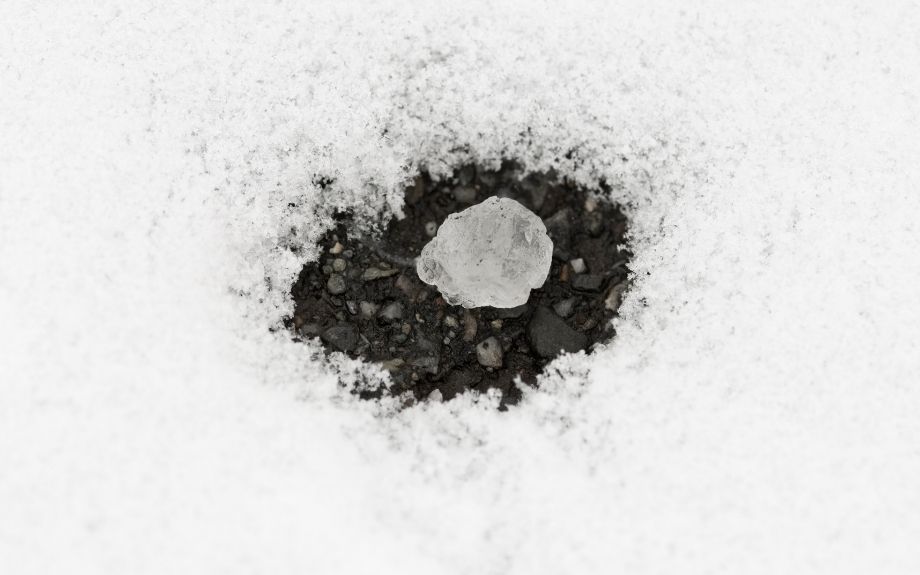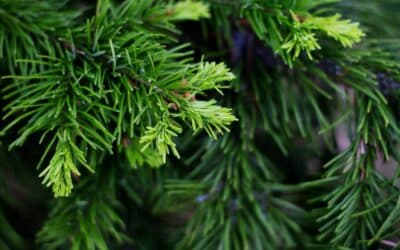Blog Topics
Even here in northern Virginia, winter can wreak havoc on your landscape – not just from the weather but also from salt. As you’re getting ready for winter, you might want to consider the best ways to prevent salt damage to your trees, shrubs, and lawn.
Salt is typically used to keep ice from forming on roads, as well as sidewalks and driveways. Even if you don’t use salt on your own property, there’s a good chance that some salt spray will wind up there from nearby roadways.
Did you know that, in the United States, more than 22 million tons of road salt are used each year? Winter salt is pretty much unavoidable. Therefore, it’s best to understand the steps you can take to protect your plants from being harmed by it.
Note: For Riverbend Landscapes & Tree Service snow removals, we prefer to use a rock salt alternative as it is safer for plants.
Keep reading to learn more about:
- The effects of salt damage to plants
- How to prevent salt damage to lawns, trees, and shrubs
- Quick tips to help your plants if salt damage does occur
What Are the Effects of Salt Damage to Trees and Shrubs?
The kind of salt that is most often used on roadways is sodium chloride, also known as rock salt. It is readily available, inexpensive, and highly effective at preventing roads from icing up.
Salt gets to plants both via their leaves (as a result of salt spray from the road) as well as when it leaches into the soil as snow melts. Salty meltwater tends to be worse for plants growing near snowbanks and other areas where snow is piled or plowed.
Salt can cause a lot of damage to landscape plants, affecting their health and, in severe cases, killing them.
Salt Damage Symptoms
Some symptoms of salt damage to plants include:
- Dieback and damage, mostly on the side of the plant facing the road or the area where the salt was used
- Browning or discoloration of foliage
- Delayed bud break in the spring
- Reduced or distorted growth and vigor
- Witches’ broom development (a tufted appearance that indicates stunted growth)
- Wilting
- Early leaf drop the following fall
- Needle tip burn
- Fewer or smaller leaves than normal
- Delayed fruit and flower development
It can be difficult to determine how much injury winter salt use will cause. It depends on the type of salt that is used, what kind of plants are being grown, when salts are applied, and how much freshwater is available to plants, among other factors.
Some of the major salt damage problems are detailed below.
Desiccation and Dieback
Salt spray can lead to a variety of problems with leaves, buds, and small twigs, where it causes them to become burned and desiccated. Salt use can also dry out the bud scales, which causes the developing flower buds and leaves beneath to dry out and be killed in cold weather.
You might notice other signs that your plant is drying out and dying back, too.
Although these signs might appear in winter on evergreen plants that are routinely sprayed with road salt from passing vehicles, it’s usually not until spring that you’ll see the effects on your lawn or shrubs. And it might not even be until the following fall that you notice any issues with deciduous shrubs and trees.
Nutrient Deficiencies
Nutrient deficiencies are also common in salt-damaged plants.
Most plants are impacted by salt that leaches into the soil. When snow melts in spring, salt is often present in the meltwater and percolates down to the root zone of surrounding plants.
Chloride and sodium ions, when dissolved (as is the case when winter salt is used), can displace other nutrients that are found in the soil. This can lead to delayed uptake (or no absorption at all) of important nutrients like phosphorus and potassium.
Soil Quality Issues
Finally, salt use can also impact soil quality in future years. When mineral nutrients are displaced by sodium ions, soil can become more compacted. Aeration and drainage tend to decrease as a result, which makes it even harder for plants to get what they need from already-depleted soil.
Plant symptoms from salt damage to soil might not appear until later in the spring or summer – or sometimes, not even until many years later.
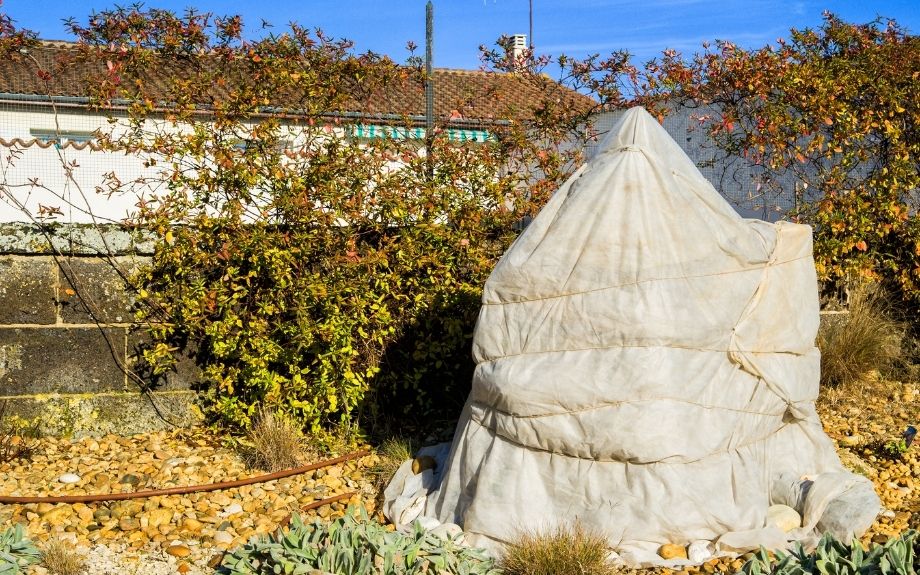
How to Prevent Salt Damage to Plants: 8 Essential Tips
Although winter salt damage to plants can be extensive, the good news is that there are many preventive steps you can take to keep your lawn, shrubs, and trees safe. Here are some of the best tips!
1. Cover Plants in Burlap
Using physical barriers can help keep salt off your plants. It’s particularly helpful for lawns and plants exposed to salt spray from nearby roads. Burlap is the most commonly used barrier but you could also use landscape fabric or create barriers out of wood or plastic. Add this to your list of landscape maintenance chores each fall – and don’t forget to take off the coverings once the temperatures warm.
2. Reduce Salt Use
It sounds obvious, but the best way to reduce salt damage to lawns and plants is simply to use less! Rather than tossing salt on the sidewalk willy nilly, consider where it is being placed and whether the quantity you are using is actually needed.
Make all salt applications carefully, specifically targeting the salt at drives, roads, and walkways rather than lawns or landscape beds.
3. Use Road Salt Alternatives
Road salt isn’t the only product you can use to prevent ice from forming. You can use things like sawdust, sand, kitty litter, or chicken grit, all of which provide the necessary grittiness for traction.
Although these might not be as effective on major roadways, they work perfectly fine on sidewalks and driveways.
You can also switch to products that use salts other than sodium chloride, as these tend to be less damaging to plants. Some good alternatives include:
- Magnesium chloride
- Calcium chloride
- Potassium chloride
- Calcium magnesium acetate (this ice-melt product contains no chloride, making it the least damaging option)
These tend to be more expensive than typical road salt but the cost savings you’ll find in reducing the damage to your plants will likely be worth the extra expense!
If you use Riverbend Landscapes & Tree Service for your snow removal, we use a rock salt alternative so as to not harm your plants and landscape.
4. Pile Snow Away from Shrubs and Trees
When you shovel, plow, or snow blow, try to avoid piling the snow against shrubs and trees, and keep it off your lawn. More often than not, this snow will contain a high concentration of salt. When it melts, it can leach into the soil and harm your plants.
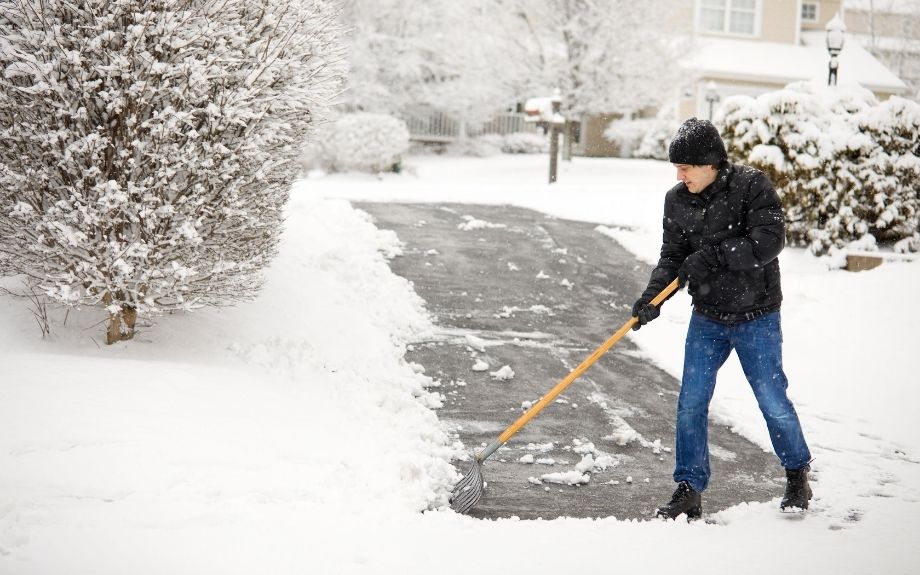
5. Protect Evergreens with an Anti-Desiccant
Anti-desiccant sprays are often applied to broadleaf evergreens to prevent them from drying out during the winter. These sprays also provide some protection from salt as they coat the leaves and needles of the plant.
Anti-desiccant treatments should be applied before the temperatures get too cold and especially before the ground freezes. Add this chore to your schedule each fall!
6. Water Thoroughly
It doesn’t occur to most people to water their lawns, trees, or shrubs when there is so much groundwater present in the late winter or early spring from melting snow.
However, it’s a good idea to water regularly as the temperatures start to warm up in late winter. That way, you can dilute some of the salt in the soil or prevent too much from leaching into the soil around your plants. Of course, you can do this at any time, but if the ground is frozen, it probably won’t have as much of an impact. Therefore, it’s best to wait until the snow starts to melt.
Rinsing salt-covered leaves and needles whenever temperatures are above freezing is another good way to get salt off plants that are exposed to salt spray.
7. Add a Layer of Mulch
Regularly adding a layer of organic mulch around your trees and shrubs to improve soil quality can help dilute some of the salt in the soil while also improving the soil’s structure and drainage. It can prevent salt damage while also reducing the likelihood that it will accumulate in the soil.
8. Plant Salt-Tolerant Plants Near Roadways
Keeping plants at least 15 feet from roadways – the “spray zone” of most moving vehicles – is the best thing you can do to reduce salt damage. However, in some cases, this might not be possible. Planting salt-tolerant plants here instead of more sensitive ones can help.
Although most plants are sensitive to salt damage at least in some capacity, there are some that can tolerate a bit more exposure than others. The soil type and weather conditions can impact how “salt-tolerant” a plant is, too. So, while planting these species isn’t necessarily foolproof, it can help reduce some damage.
Good salt-tolerant options include:
- Wax myrtle
- White ash
- Hedge maple
- Willow oak
- Saltbush
- Chinese holly
- Inkberry
You can view a more comprehensive list of salt-tolerant plants for northern Virginia here >>.
You may wish to avoid planting those that are more sensitive to salt damage, such as Eastern hemlock, red maple, common boxwood, and Norway spruce. Consider planting more durable, fast-growing trees as an alternative.
Regardless of the type of plant you grow, avoid planting in areas where melting snow runoff naturally flows.
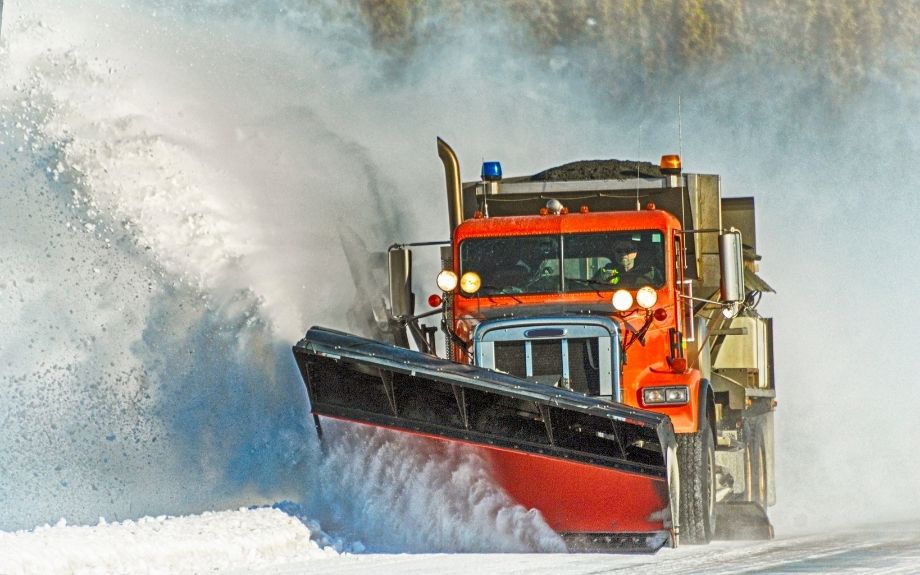
Will Plants Recover from Salt Damage?
You know what they say – an ounce of prevention is worth a pound of cure. Protecting your plants from salt damage is the single best thing you can do in winter. Prevention will help keep them healthy and beautiful.
However, despite your best efforts, you might find that salty soil or salt spray leaves your plants looking ragged.
The good news is that there are treatments that can be used to reverse salt injury to plants or at least to mitigate its effects. Simple steps like springtime pruning can help remove branches or foliage that died due to salt poisoning. Be patient and don’t panic if your plants are injured by salt – they can often recover.
Again, though, planning ahead to prevent salt damage is key.
Need a Hand?
Do you need help when it comes to preventing salt damage to your trees and shrubs? Although there are lots of DIY tips you can follow to protect your gorgeous greenery, the reality is that there sometimes aren’t enough hours in the day to tackle everything that needs to be done.
Contact Riverbend Landscapes and Tree Services for help – we’re here for you before, during, and after winter blankets northern Virginia with snow. Our landscape maintenance services include all the preventive measures you need to keep your trees and shrubs protected. And if salt damage does leave your landscape looking a little less than gorgeous, we’ll be there to step in and make sure your lawn, shrubs, and trees bounce back with ease.
Give Us a Call at 703-402-9366
If you'd like help with your trees or landscape, have any questions, or would like to schedule an appointment with one of our Certified Arborists, please give us a call. We'd love to hear from you!

